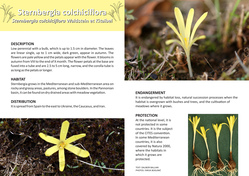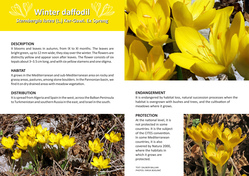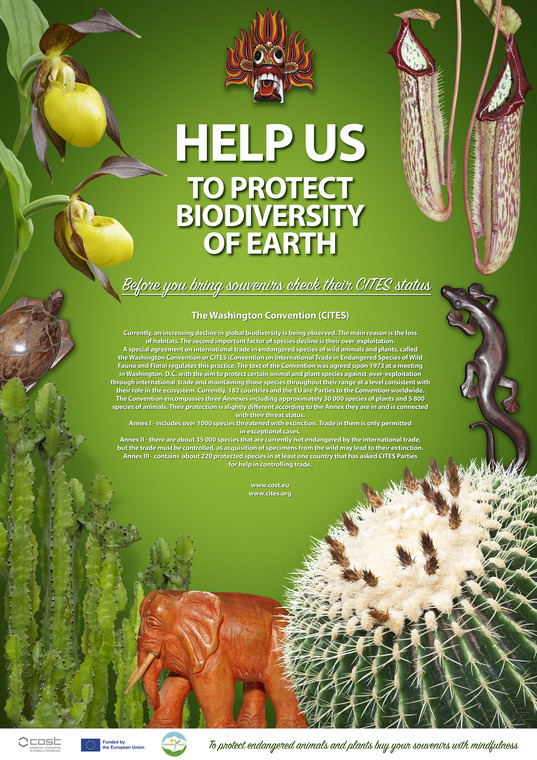CITES Materials
print
Currently, an increasing decline in global biodiversity is being observed. The main reason is the loss of habitats and modifications of natural systems. The second important factor of species decline is their over-exploitation.
A special agreement on international trade in endangered species of wild animals and plants, called the Washington Convention or CITES (Convention on International Trade in Endangered Species of Wild Fauna and Flora) regulates this practice. The text of the Convention was agreed upon in 1973 at a meeting in Washington, D.C. with the aim to protect certain animal and plant species against over-exploitation through international trade and maintain those species throughout their range at a level consistent with their role in the ecosystem. Currently, 182 countries and the European Union (EU) are Parties to the Convention worldwide.
The Convention encompassess three Annexes including approximately 30,000 species of plants and 5,800 species of animals. Their protection is slightly different according to the Annex they are in and is connected with their threat status.
Annex I—includes over 1,000 species threatened with extinction. Trade is only permitted in exceptional cases.
Annex II—there are about 35,000 species that are currently not endangered, but the trade must be controlled, as acquisition of specimens from the wild may lead to their extinction.
Annex III—contains about 220 protected species in at least one country that has asked CITES Parties for help in controlling trade.
Since 1 June 1997, the trade of CITES specimens with and within the European Union is regulated by Council Regulation No. 338/97 on 9 December 1996 on the protection of species of wild fauna and flora. It translates CITES principles into the realities of the Union, and in many cases significantly tightens them.
This Regulation contains lists of species subjected to restrictions, listed in four annexes, marked with the letters A, B, C and D. As with CITES attachments, each of these annexes has slightly different restrictions. The Regulation introduces all CITES provisions, but also sets out a number of others. For example, it prohibits commercial exploitation (including sales) in the EU of all species of Annex A, and for species of Annex B with no proof of legal origin. The four annexes contain all species listed in Annexes I and II CITES as well as a number of other species protected in the Union.
(Text: Michael Kiehn & Martin Rose, from the publication CITES plants of Europe)
 CITES Poster
CITES Poster
Download the poster in large format here.
CITES Booklet
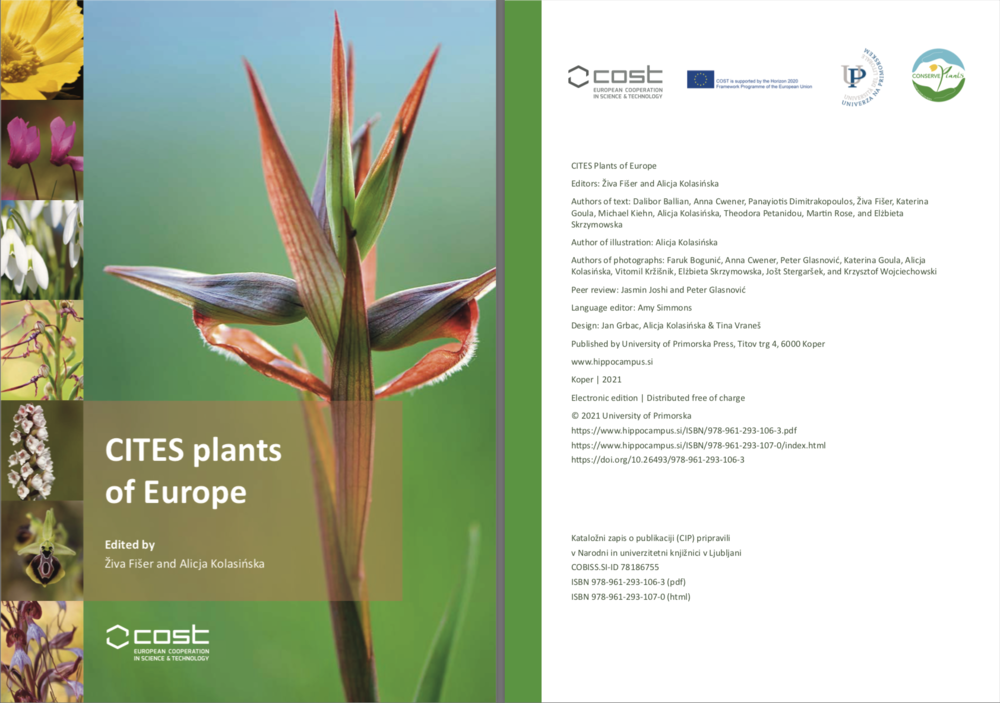
Browse through the book here.
Download the book in pdf format here.
National flagship CITES plant species across Europe
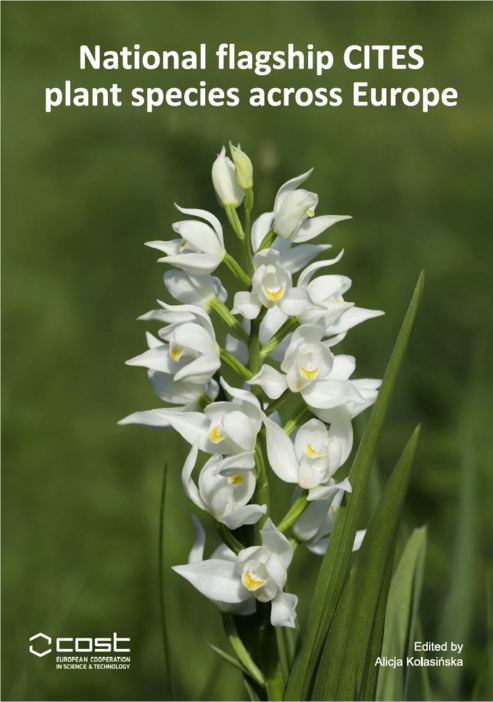
Download the book in pdf format here.
CITES Sheets
CITES general info EU regulation CITES
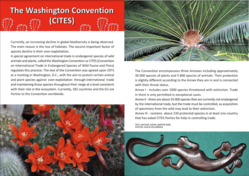
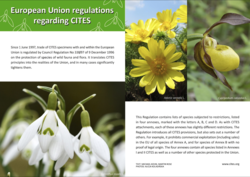
Cyclamen persicum Cyclamen repandum
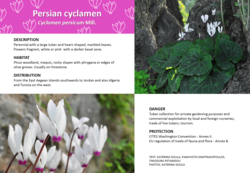
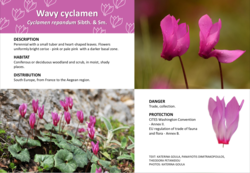
Cyclamen purpurascens Cyclamen graecum
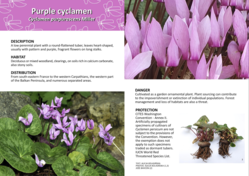
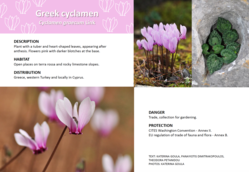
Cyclamen creticum Cyclamen coum
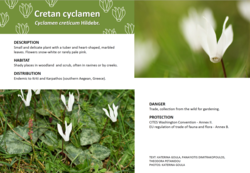
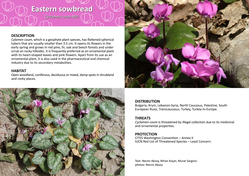
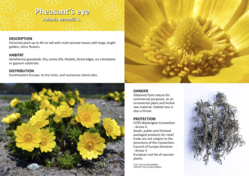
Galanthus nivalis Galanthus reginae-olgae
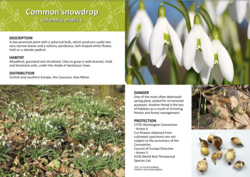
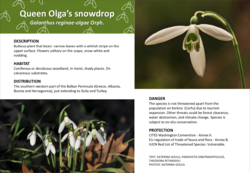
Euphorbia piscatoria Euphorbia stygiana
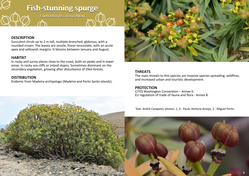
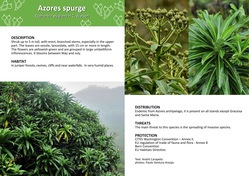
Dactylorhiza maculata Dactylorhiza baumanniana
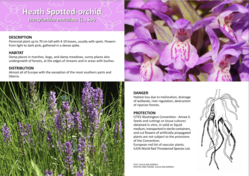
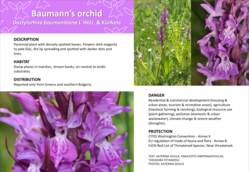
Dactylorhiza fuchsii Dactylorhiza sambucina
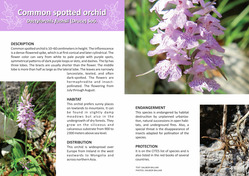
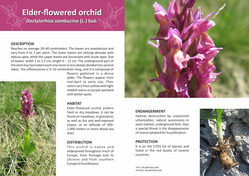
Dactylorhiza incarnata Dactylorhiza majalis

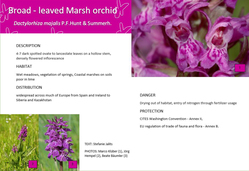
Dactylorhiza viridis Dactylorhiza foliosa
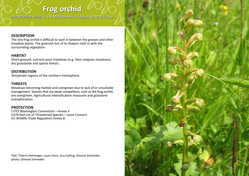
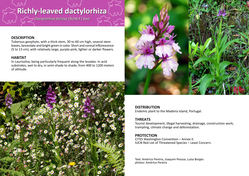
Epipactis albensis Epipactis purpurata
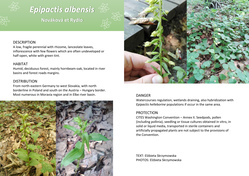
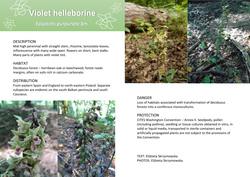
Epipactis nordeniorum Nigritella nigra
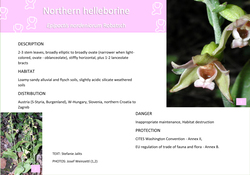
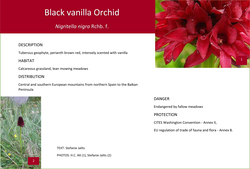
Goodyera repens Goodyera macrophylla
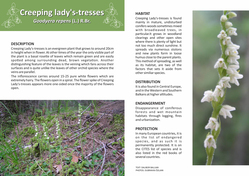
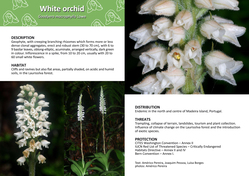
Cypripedium calceolus Plathanthera chlorantha
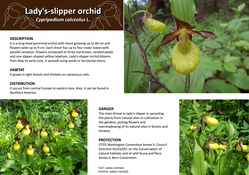
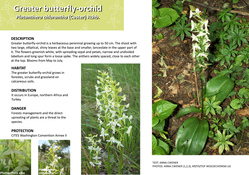
Platanthera bifolia Platanthera pollostantha
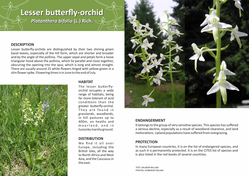
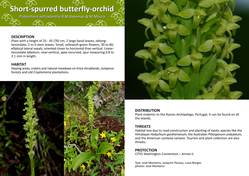
Platanthera azorica Platanthera micrantha
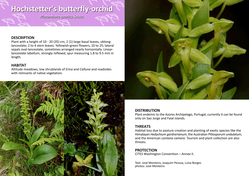
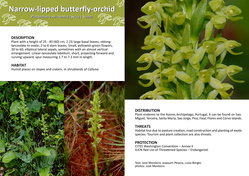
Himantoglossum comperianum Himantoglossum adriaticum
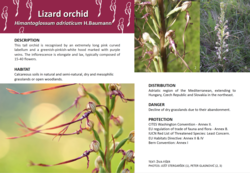
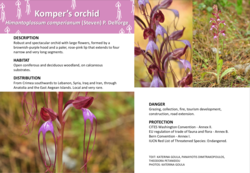
Orchis anatolica Orchis mascula
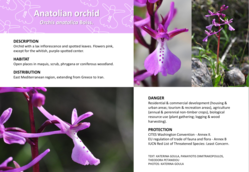
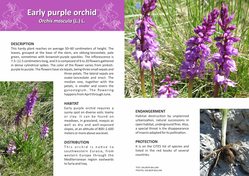
Orchis pallens Orchis scopulorum
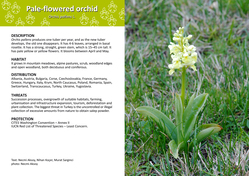
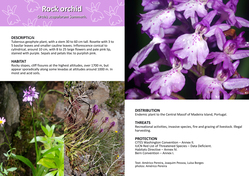
Orchis militaris Orchis laxiflora
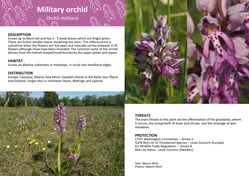
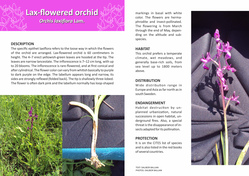
Orchis purpurea Epipogium aphyllum
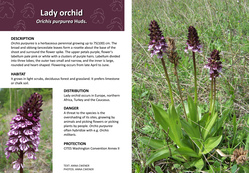
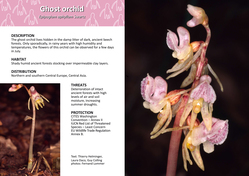
Neotinea tridentata Neottinea ustulata
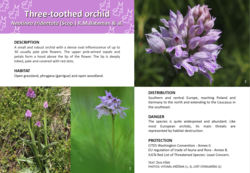
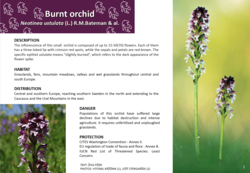
Neottia nidus-avis Ophrys apifera
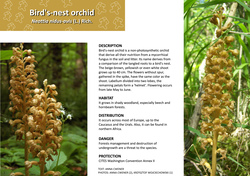
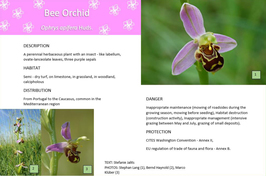
Ophrys reinholdii Ophrys argolica
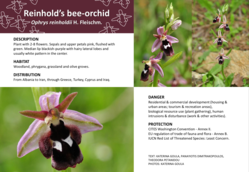
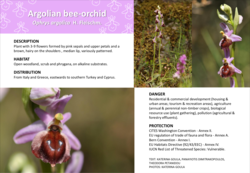
Ophrys cretica Ophrys aesculapii
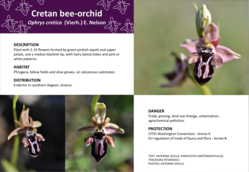
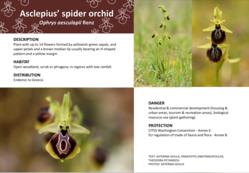
Ophrys ferrum-equinum Ophrys bertolonii
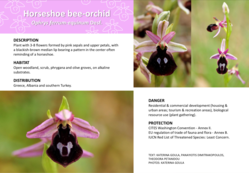
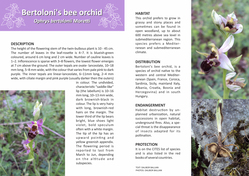
Anacamptis sancta Anacamptis boryi
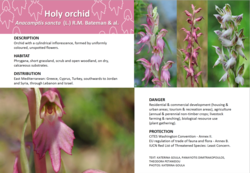
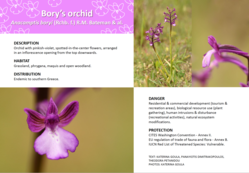
Anacamptis coriophora Anacamptis papilionacea
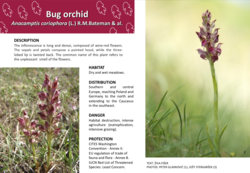
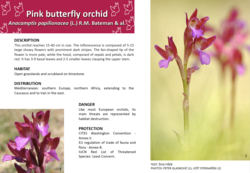
Anacamptis pyramidalis Spiranthes aestivalis
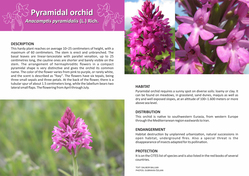
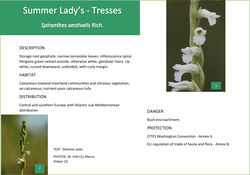
Spiranthes spiralis Gymnadenia frivaldii
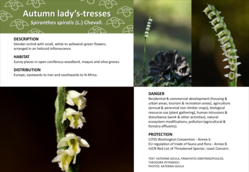
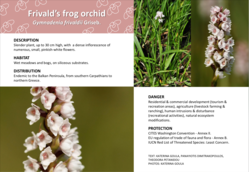
Gymnadenia conopsea Gymnadenia odoratissima
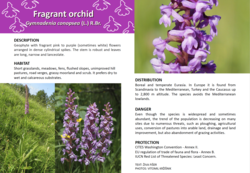
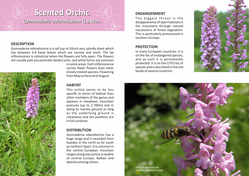
Cephalanthera epipactoides Cephalanthera damasonium
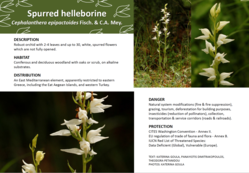
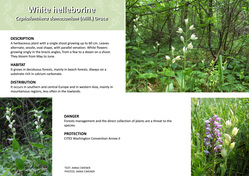
Cephalanthera rubra Limodorum abortivum
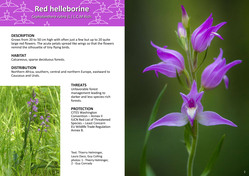
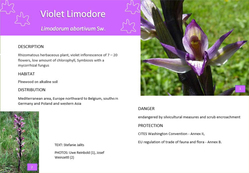
Serapias vomeracea Serapias perez-chiscanoi
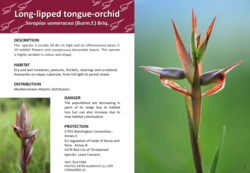
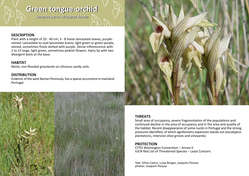
Sternbergia colchiciflora Sternbergia lutea
